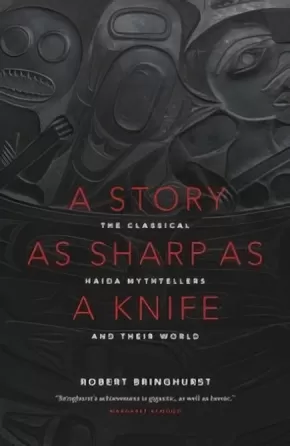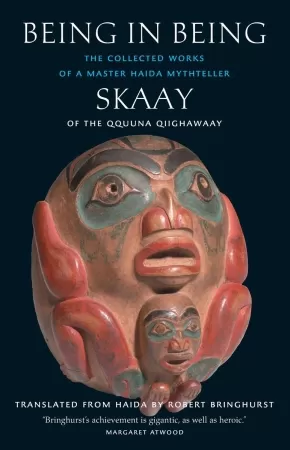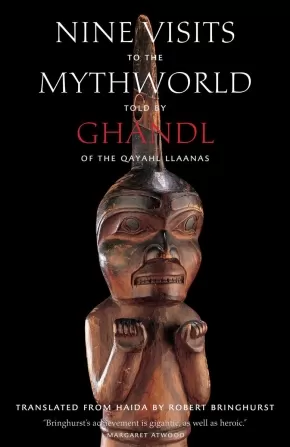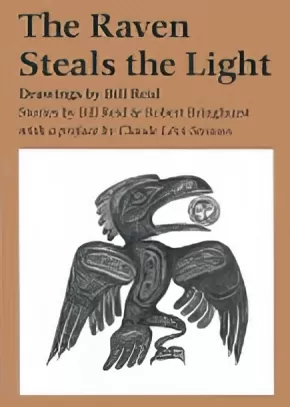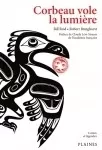
Robert Bringhurst
Robert Bringhurst is a poet, typographer, translator, book designer, and linguist, well known for his award-winning translations of the Haida storytellers Skaay and Ghandl, and for his translations of the early Greek philosopher-poet Parmenides. His manual The Elements of Typographic Style has itself been translated into ten languages and is now one of the world’s most influential texts on typographic design. Bringhurst lives on Quadra Island, off the British Columbia coast.
Books (3)
A Story as Sharp as a Knife
$28.95
Format:
Paperback
Text Content Territories:
Indigenous Canadian; First Nations; Haida;
ISBN / Barcode: 9781553658399
Synopsis:
Synopsis:
A seminal collection of Haida myths and legends; now in a gorgeous new package.
The linguist and ethnographer John Swanton took dictation from the last great Haida-speaking storytellers, poets and historians from the fall of 1900 through the summer of 1901. Together they created a great treasury of Haida oral literature in written form.
Having worked for many years with these century-old manuscripts, linguist and poet Robert Bringhurst brings both rigorous scholarship and a literary voice to the English translation of John Swanton's careful work. He sets the stories in a rich context that reaches out to dozens of native oral literatures and to myth-telling traditions around the globe.
Attractively redesigned, this collection of First Nations oral literature is an important cultural record for future generations of Haida, scholars and other interested readers. It won the Edward Sapir Prize, awarded by the Society for Linguistic Anthropology, and it was chosen as the Literary Editor's Book of the Year by the Times of London.
Bringhurst brings these works to life in the English language and sets them in a context just as rich as the stories themselves one that reaches out to dozens of Native American oral literatures, and to mythtelling traditions around the world.
Being in Being: The Collected Works of a Master Haida Mythteller
$29.95
Format:
Paperback
Text Content Territories:
Indigenous Canadian; First Nations; Haida;
Reading Level: N/A
ISBN / Barcode: 9781771623759
Synopsis:
Synopsis:
Being in Being contains three masterpieces by legendary Haida mythteller Skaay of the Qquuna Qiighawaay. The shortest recounts the high points of the legend of his family. The second, Raven Travelling, is the longest and most complex version of the story of the Raven ever recorded on the Northwest Coast. The third is The Qquuna Cycle, a narrative poem of nearly 5,500 lines, one of the true masterpieces of North American literature. Robert Bringhurst’s eloquent and vivid translations of these works are supplemented by explanatory notes that supply the needed background information.
Additional Information
384 pages | 5.50" x 8.50" | Paperback
Nine Visits to the Mythworld: Told by Ghandl of the Qayahl Llaanas
$26.95
Format:
Paperback
Text Content Territories:
Indigenous Canadian; First Nations; Haida;
Reading Level: N/A
ISBN / Barcode: 9781771623773
Synopsis:
Synopsis:
In the Fall of 1900, a young American anthropologist named John Swanton arrived in the Haida country, on the Northwest Coast of North America, intending to learn everything he could about Haida mythology. He spent the next ten months phonetically transcribing several thousand pages of myths, stories, histories and songs in the Haida language. Swanton met a number of fine mythtellers during his year in the Haida country. Each had his own style and his own repertoire. Two of them—a blind man in his fifties by the name of Ghandl, and a septuagenarian named Skaay—were artists of extraordinary stature, revered in their own communities and admired ever since by the few specialists aware of their great legacy.
Nine Visits to the Mythworld includes all the finest works of one of these master mythtellers. In November 1900, when Ghandl dictated these nine stories, the Haida world lay in near ruins. Wave upon wave of smallpox and other diseases, rapacious commercial exploitation by fur traders, whalers and miners, and relentless missionization by the church had taken a huge toll on Haida culture. Yet in the blind poet’s mind, the great tradition lived, and in his voice it comes alive. Robert Bringhurst’s eloquent and vivid translations of these works are supplemented by explanatory notes that supply the needed background information.
Additional Information
224 pages | 5.50" x 8.50" | b&w photographs | Paperback
Teen Books (1)
The Raven Steals the Light
$18.95
Artists:
Format:
Paperback
Text Content Territories:
Indigenous Canadian; First Nations; Haida;
ISBN / Barcode: 9781550544817
Synopsis:
Synopsis:
Ten masterful, complex drawings by Bill Reid are accompanied by ten episodes from Haida mythology told by Bill Reid and Robert Bringhurst. The result brings Haida art and mythology alive as never before in an English-speaking world. The collection includes, says Reid, "a good selection of bestiality, adultery, violence, thievery and assault, for those who like that sort of thing."
Educator Information
This work is available in French: Corbeau vole la lumiere
Additional Information
112 pages | 6.13" x 8.44"
Kids Books (1)
Corbeau vole la lumiere
$19.95
Artists:
Format:
Paperback
Text Content Territories:
Indigenous Canadian; First Nations; Haida;
ISBN / Barcode: 9782896110742
Synopsis:
Synopsis:
Avant qu’il y ait quoi que ce soit au monde, avant que les eaux recouvrent tout puis se retirent, avant qu’il y ait sur la terre des animaux, dans l’air des oiseaux, dans la mer des poissons, des baleines et des phoques, il y avait un vieil homme qui vivait dans une maison, au bord d’une rivière, avec son unique enfant, une fille. Qu’elle soit belle comme les branches du sapin ciguë sur un ciel de printemps au lever du soleil ou laide comme une limace de mer est à vrai dire de peu d’importance dans cette histoire qui se passe à peu près complètement dans l’obscurité. »
C’est toute la richesse de la mythologie haïda qui éclate dans l’œuvre Corbeau vole la lumière. À travers les mésaventures cocasses mais néanmoins profondes de Corbeau le filou, on découvre des récits à la fois poignants et pittoresques, dans un monde où les animaux parlent, où les rêves deviennent réalité, où les monstres et les hommes vivent côte à côte. Au-delà d’un échantillonnage de violence, de roublardise et de vindicte, c’est tout un monde où règnent l’amour et la communication entre les espèces qui se révèle à nous.
Educator Information
This work is also available in English: The Ravel Steals the Light.

